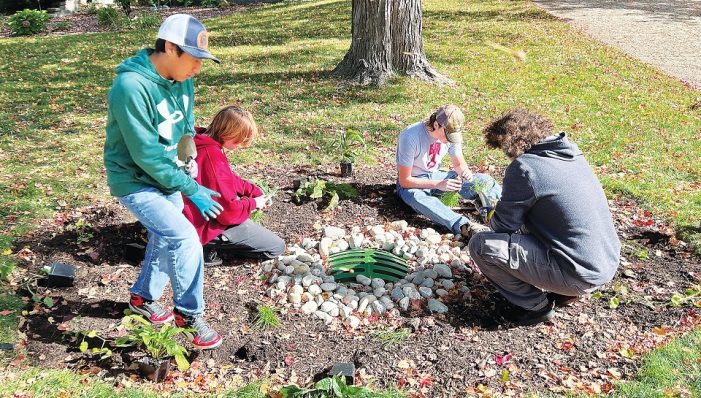By Matt Mackinder
Clarkston News Editor
CLARKSTON — The Clarkston High School Environmental Club has been out and about, working on a bioswales project on Middle Lake Road with the Clarkston Biophilic Team and the Clinton River Watershed.
Jim Brueck received a grant from Pure Oakland Water, funded by Jim Nash and the Oakland County Water Resources Commission, and last school year, Brueck approached the club about teaming up to install bioswales within the community.
Bioswales are landscaping features that are designed to capture stormwater runoff and filter out the pollution that comes from surfaces like streets and parking lots.
The students embraced the idea and began their research. Over the summer, students met with community members and were able to confirm the installation of bioswales onto four homeowners’ front yards. Plans were finalized at the start of this school year and the students began their work on Oct. 1, completing the planting portion of the project Oct. 8..
“This project benefits the community because bioswales help to reduce and treat stormwater runoff,” said Amy Allen, Clarkston High School Physical Science teacher and Environmental Club co-sponsor. “The bioswales that the students installed were designed using native plants in Michigan. These plants have root systems that can extend an excess of 15 feet, allowing them to search out more water and hold soil in place, preventing erosion that could occur from the stormwater.
“The students have learned so much about native plants and bioswales since this project began in the spring. The first step of the project was to teach the students about the characteristics of plants such as the need for sun or shade, whether are they drought tolerant or not, and the spacing of plants. As their knowledge grew, they began to ask questions about the why and how’s of how bioswales work.”
Over the Oct. 7-8 weekend, the students completed the projects within the community but still need to install the bioswale that will be located at Clarkston High School. The hope is to have the high school installation complete in the coming weeks.
One of the Environmental Club students, David Schell, is excited about the project.
“The bioswales will be beneficial to the community as they will help filter out our community water and keep it clean, along with the addition of a vibrant aesthetic provided by the swales themselves,” Schell said. “The project allowed me to improve my leadership skills, notably those involving planning and improvisation.”
PHOTO: From left, Zac Montgomery, Grace Modrzynski, Connor Quinlan, and Griffin Aghamoali work on a bioswale. Photo: Amy Allen

